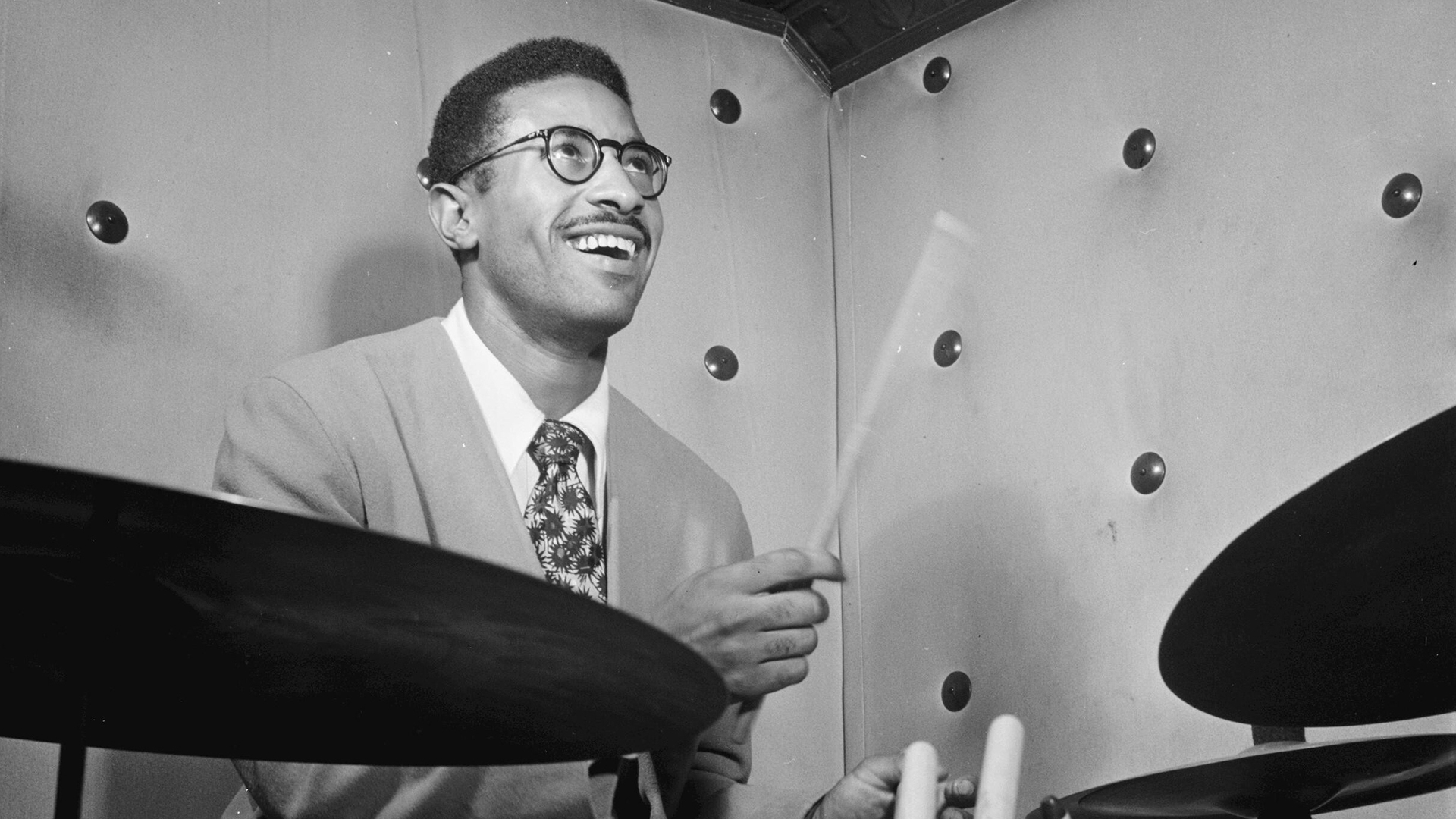Max Roach: The Drum Also Waltzes
(USA, 82 min.)
Dir. Sam Pollard and Ben Shapiro
It’s more than fitting that a film about one of the greatest and most influential drummers to sit behind a kit required a bit of gymnastics in order to make a whole out of disparate parts. For decades, directors Sam Pollard and Ben Shapiro had been independently shaping their own projects about Max Roach, the iconic jazz musician who almost singlehandedly (and double-footedly) transformed the drum kit from a background metronomic device into a lead instrument in its own right.
The Drum Also Waltzes begins with an ever prickly Roach denying the moniker of “jazz,” preferring instead the more lofty “African-American instrumental music,” thus firmly establishing the music’s origins birthed by Black musicians, while also deriding the too-familiar nickname that connotes a more casual, less refined type of playing.
Through a series of exhaustively researched clips, we see Roach rise from a supporting player with some of the certified geniuses of the form, from Charlie Parker and Dizzy Gillespie’s mathematically mindboggling bop-eras, through to the even more dense experimentation of Coleman Hawkins and Thelonious Monk, right through the modal machinations of Miles Davis up to Roach’s own seemingly irrepressible desire to extract symphonic sounds and timbres from his instrument that was primarily considered strictly for rhythmic purposes.
It’s not until the final credit roll that we see Roach’s most famous trick: playing a high-hat in ways that make it akin to a fully chromatic instrument. Using his impeccable technique to find the sounds in what for others is a straightforward, inarticulate chunk of metal with some resonant elements placed atop for shimmer, he coaxes out a constellation of sounds, from the foot pedal to the stand to the cymbals themselves, creating musical poetry with something that other musicians often use simply to keep a beat.
The film treats jazz fans to a number of similarly sublime performances from Roach’s varied career, yet the most extraordinary contribution that the documentary makes are the extensive interviews with Roach that sat in the proverbial can for years. It’s here we are told tales not only of his musical journey, but his struggles and triumphs told from a first person perspective. This is a man who was at the forefront of the civil rights era of the 1960s, taking Dr. King’s words and providing a syncopated call-and-response to their powerful pleas.
Fellow legends like the late Harry Belafonte were captured on tape providing their own view of the man, along with the likes of Sonny Rollins who is one of the few from that era who is still thankfully with us at the time of this writing. Other contemporary musicians such as Ahmir “Questlove” Thompson, ubiquitous in documentaries such as this one, guide modern listeners through Roach’s contributions that resonate to this day. Abbey Lincoln’s contribution is the most welcome, though, as Roach’s former spouse and one who was there to witness the complexity of the man and how the various aspects of his personality were reflected in his music—either through smooth, swinging lines or more violent, cacophonous, rage-like explosions of sound and fury.
Perhaps the purest articulation of Roach’s percussion-first is found in his M’Boom period, an ensemble of a number of different cultures and instruments that demonstrated overtly his tireless drive to bring the drum to the forefront of expression. The clips show immense skill and deeply moving instrumental passages, all while providing a deeply poignant reminder of the drum’s role as both a mode of communication and a fundamental aspect of spiritual expression.
Pollard and Shapiro’s film doesn’t quite gel like jazz, and many times things feel a bit more straightforward and predictable than intended. Speaking both to audiences familiar with the narrative and to neophytes alike, it’s as if they can’t quite decide which audience is the intended one.
Still, in the end, the power of Roach’s genius shines through, and in many ways the result serves as a fitting if not a definitive celebration of both the musician and the man. While the form of the film is far more straight ahead than Roach’s own impressive art, this portrait of a percussionist still manages to both commemorate a legend as well as speak to how the repercussions of his percussion continues to resonate to this various day in almost all forms of musical expression.
Max Roach: The Drum Also Waltzes screened at the 2023 Windsor International Film Festival.
Update: The film opens at Hot Docs Ted Rogers Cinema on Feb. 9, 2024.














